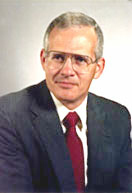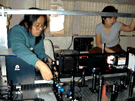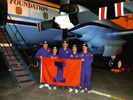|
Leonid MAC |
| home |
| View the shower |
| Mission Brief |
| Science Update |
| Media Brief |
| links |
 Chester S.
Gardner,
Chester S.
Gardner, University of Illinois at Urbana-Champaign 
Last updated: October 2000
Brief Biographical Information: Professor Gardner has conducted both theoretical and experimental research in satellite laser ranging, laser altimetry, laser remote sensing and laser guide star adaptive imaging. Since joining the factulty of the University of Illinois in 1973, he has served as the thesis advisor for more than 50 Master's and 25 Doctoral candidates. Four of his Ph.D. students have won the Allen Prize of the Optical Society of America in recognition o their dissertation research. Dr. Gardner is Associate Dean and Director, Engineering Experiment Station. Research: During the past 15 years, much of his work has focused on Rayleigh and resonance fluorescence lidar studies of the middle atmosphere. Research on Leonid MAC: For the 1998 Leonid MAC mission, Professor Gardner headed the deployment of a two-beam Iron Boltzmann Lidar. The Lidar performed accurate measurements of the background neutral Fe debris layer densities, winds, and temperature. The Lidar also measured the neutral iron atom debris trails of leonid meteors that drifted by the lidar beam. Objectives were to measure the impact of meteoric flux on the iron layer structure, to study the relationship between meteor trail density and visual brightness, and to measure the Rayleigh cross-section of meteor dust and smoke. This NSF sponsored instrument occupied most of the middle section of the Electra aircraft. In this mission, Dr. Gardner acted as NSF's principal investigator for the deployment of Electra in this two-aircraft mission.
|




